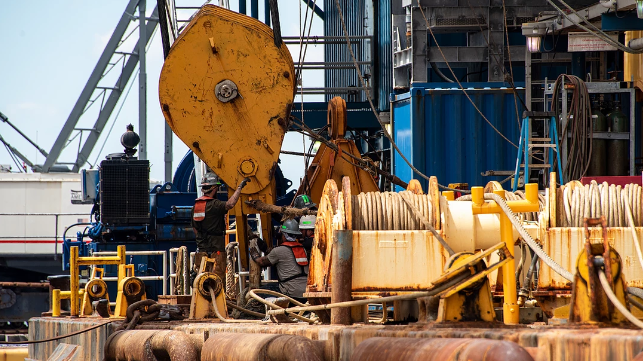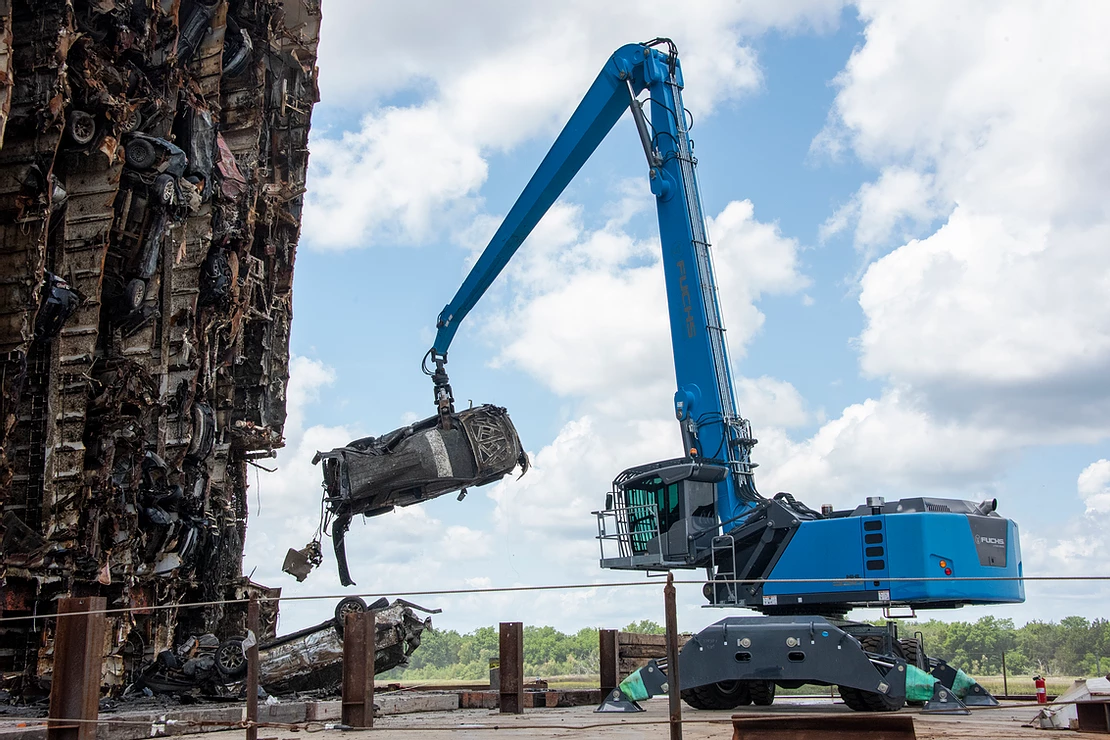Salvors Begin Fifth Cut Through the Hull of the Golden Ray

Operations on the fifth cut through the hull of the grounded ro/ro Golden Ray have now begun, according to the unified command in charge of the response.
Once it has been separated, the next section in the sequence - the third aft from the bow - will be stowed on a floating dry dock and transported to a facility at nearby Mayors Point Terminal.
Meanwhile, the salvage team has removed more than 50 vehicles and part of a moveable deck from the third section forward of the stern, part of a series of weight-shedding operations to prepare for lifting. The previous section in the process - the engine room section - has been loaded out on a barge and prepared for shipping down to a scrap yard in Louisiana. Its departure is awaiting a favorable weather window, according to the salvors.
Cutting chain in the groove for the fifth cut, May 6. Workers periodically shorten the chain during cutting using a cutting torch. (St. Simons Sound Incident Response)

A material handler removes vehicles from Section Seven during sea-fastening operations, May 4. (St. Simons Sound Incident Response)

that matters most
Get the latest maritime news delivered to your inbox daily.
The risk of oil discharge is lower for the remaining cuts in the wreck removal process, according to the response command. On-the-water response teams continue to clean up very light oil sheens and debris, and the command's shoreline survey teams are still patrolling to find and remove any debris or fuel residue.
The salvors have three cuts, four section hoists and a seabed debris cleanup ahead before the wreck removal process is completed, and the work is expected to take at least several more months.
The Golden Ray went aground and partially capsized in Georgia's St. Simons Sound on September 7, 2019. During an outbound transit in calm conditions, a routine turn to starboard turned into a runaway maneuver, ending with the vessel aground and resting on her side. Lt. Ian Oviatt, a staff engineer at the Coast Guard Marine Safety Center, told the NTSB that the vessel had taken on too little ballast for her cargo load. “The cause of the vessel capsizing was lack of righting energy due to the way the vessel was loaded,” Oviatt told an investigative panel last September. “The vessel could have taken on additional ballast to be in compliance.”
